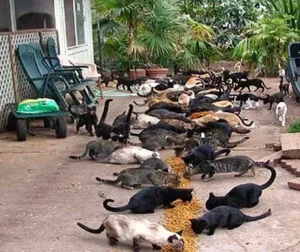
The issue of cat overpopulation is a growing concern, leading to countless kittens born without homes each year. One effective way to combat this crisis is through sterilization or spaying/neutering. It takes a village and you are crucial in this.
Step 1: Ensure Vaccination
Before proceeding with sterilization, it’s crucial to prioritize the cat’s health and safety. Many diseases can be transmitted while in the hospital setting, especially in high-volume clinics like low-cost options. To prepare your feline friend, make sure they have received their 3 in 1 or FVCRP vaccines. Having at least two doses of the vaccine is essential to ensure the cat or kitten is fully protected. For more information about vaccines and where to get them, visit our comprehensive guide: Shots, Shots, Shots!: What You Need to Know About Vaccines.
Step 2: Secure an Appointment
Appointments for spaying or neutering can be challenging to come by and often fill up rapidly, especially at low-cost clinics. As soon as you welcome a cat into your home, regardless of their age, call to make an appointment for their spay or neuter procedure. Early booking increases the likelihood of securing a slot, so don’t delay.
Keep in mind that low-cost clinics may require frequent checks for appointment openings, so stay vigilant in your quest to provide responsible pet ownership or with helping your area reduce the overpopulation crisis.
Low Cost Clinics:
California Database Search: SpayCalifornia
Riverside: The Mary S. Roberts Pet Adoption Center – Spay/Neuter (petsadoption.org)
Ontario: Ontario Spay and Neuter
Loma Linda Walk in Same Day (go early): Services — Loma Linda Animal Hospital (llah.vet)
Step 3: Seek Financial Assistance
We understand that the financial aspect of sterilization can be a concern for many individuals and families. If you need financial assistance to cover the costs of spaying or neutering, consider reaching out to organizations like Actors & Others or exploring the resources available on POPCO.
Actors & Others : Actors and Others for Animals : Spay / Neuter Assistance, Pet Over Population
POPCO: Riverside County Residents (popco-inc.org)
Sterilization is a vital step in reducing cat overpopulation and ensuring the welfare of our feline friends. By following these steps and seeking assistance when needed, you can make a significant difference in curbing the kitten crisis and promoting responsible pet ownership. Together, we can create a safer and healthier environment for cats and kittens across our communities.
In California, it’s important to note that rescue organizations cannot rehome cats and kittens unless they are fully vaccinated, microchipped, and sterilized. These measures are not only essential for the health and well-being of the feline population but also contribute to responsible pet ownership.


